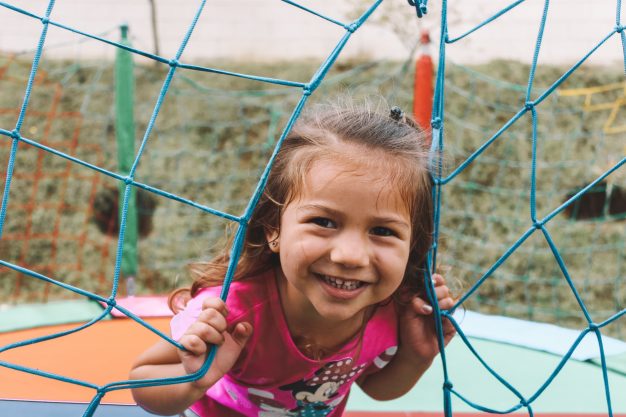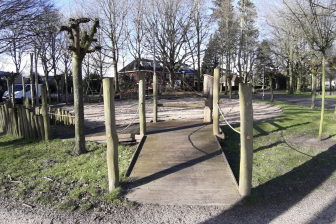
Adventure Play in 70s East London P3
This article presents the third and final part of a case study interview with Tom Burns. In it, we discuss the role of a play-leader of an adventure playground and Tom’s advice for the setting up an adventure playground.
Tom Burns works as a Senior Lecturer in the Centre for Professional Education and Development at London Metropolitan University, United Kingdom (UK).
How was the playground was supervised, if at all? Did you make use of play-leaders?
Tom Burns (TB): We didn’t really have play-leaders as such. In the beginning, older kids like me would take on this role. Over the years, the role became more formalised and we would hire play-leaders, but they didn’t really have a clue.
What was the role of the play-leader?
TB: On the playground, you watch, listen and when necessary act very quickly; but we didn’t lead the play!
But, did the children simply play or was there still a need for more active leadership?
TB: They did just play. But what was interesting was how often they wanted you to join in, a water fight, help with the horse but also story telling. Sharing stories and playing lateral thinking games for hours. When it was a long hot summer and lazy days – or when weather was horrible – we would sit down and entertain each other. We were there for the kids – not for their education – not to save their souls – but to be with them in a supportive way. Probably it was where trust could be demonstrated … quiet kids became noisy, ones that were “stupid” by school standards could formulate the most amazing questions when playing thinking games. These games were not instituted to bring about learning: like the structures, swing and fire – the kids wanted to be challenged, they wanted “difficult”. The play-leader was pivotal in fostering this caring environment. With bullying for example or dangerous behaviour kids would come and tell you. This was different from telling a teacher. The kids felt that you were “theirs”. When in a climate that was challenging but supportive – these kids blossomed.
So did you always find suitable people?
TB: It was hard to get hold of a good play-leader to work on the adventure playground. They have to be special people or really well trained. For example, when we did get more funds, we did hire more play-leaders. We had lots of applicants. The ones that we got had youth qualifications and were working in schools. However, they all struggled. This made us realize the little but important things we do – and especially the little things we didn’t do. For example, we never took registers. We knew all the kids. We knew each other. We might do a head count, but we never took a register. And one of these play-leaders was taking a register. They never spoke to him again. That blew his relationship with them. This was a trained teacher who was teaching in schools and had youth qualifications. He was not un-able or horrible. He simply did not recognize what the adventure playground was about.
Considering how hard the work was, what was the drive that kept you going?
TB: There were lots of individual reasons that kept us going, but also collective ones. The wider political one was that we’ve seen an opportunity of reclaiming space that had been lost. The original adventure playground movement had slowly been taken over by local authorities, schools and youth organizations. Their project was one of rehabilitation, which was seeing young working class people as a deficit, as lacking something. You know, the idea of normality and prevention of delinquency ran wild at the time. So, this was about reclaiming our space. Plus, it was using the opportunity that came up in this moment of post-modernity. There was a kind of squatting movement. Most of the beautiful Victorian houses we see these days were down for demolition to build tower blocks for affordable housing. Others were put down to make space for ring roads. The plan was to have all these ring roads that would connect the different parts of the city. It was only about 1974 or 1975 that people realized that the more roads you build the quicker they fill up. So, there was then a movement to save all these houses. This created a moment of optimism that these spaces could be reclaimed. People wanted these houses and not roads. They wanted people. So, it was sort of reclaiming this promise of freedom that was made after the Second World War. It was about construction and not destruction.
We have talked in rather general terms, but did you have a particular personal motivation?
TB: For me personally, it was my sister, who was nineteen, and who used to work in a free school. She helped with these projects where children came from the inner city to the country. She was killed in a car accident and because of this, my mother and father became foster carers. They stayed in touch with the people from the free school. So, where I came from we cared for other kids. Plus, my family was politically active. My parents would fight the far-right National Front. So where this particular adventure playground was, was also the National Front who needed to be resisted. So, there were also political reasons beside personal and social reasons.
What happened with the playground?
TB: Those of us that were running it were young at that time. We were all in school. Then, as we got older, we were working. So, the group that set it up found it hard to keep it going. In addition, cuts in local authorities spending made it hard to find the resources to run the playground. It dwindled. Initially, we’d set up a constitution that said no one could be on it over the age of twenty-eight. And that was how we tried it to keep away from local authorities and so on. So, we could invite them to things but they could not be added. They could not have a vote. They could not have final say. However, in the end, we had to hand the playground over to a management committee of parents of kids that were on the playground. With the parents, you quickly get involved in the politics with a small “p”. In the end, it was converted into one of these soft play areas with bark and rubber, which is still there or at least a sad reminiscence of it.
Do you think similar playgrounds to the one you have set up still exist?
TB: There are still adventure playgrounds. However, they are much more controlled. They are not the same.
What do you recommend someone interested in setting up an adventure playground?
TB: You’ve really got to do your homework. My thoughts about Health and Safety and Child Protection – and these must not be ignored – means that really I would say: ‘Don’t do it – it cannot be done’. But if you do want to do it – look around and find one that is inspirational and is working. Find out from them how they got it to happen. Then build up contacts and networks – use social media. Get the local journalists on your side, yes, but all the local networks and bloggers.
What might be possible challenges?
TB: It was hard work. It was such hard work. It was murder. But when young enough – and naïve enough – you go for it!
However, what can people, in particular children, get out of it when taking on the challenge – and the hard work?
TB: There should be no prescription of what people should get from it. It’s definitely not a romantic place to get back to. However, there’s more to life than work, work, work. It was about building a better future. These adventure playgrounds and these movements, they were to maintain and reclaim the promises made during and after the war. It was taking the optimism. It was trying to occupy these visions. So, it was more than preparing everyone solely to enter the economically productive world. It was helping kids to reflect, to think, to discuss, to play – to become real citizens.
Tom, what is your final advice for those interested in adventure play?
TB: There are always opportunities; it is about recognizing the ones that come up. It is about being aware. It is also about setting up a group – doing it yourself. Plus, if you do something with good intent, a lot of other people with good intent will join you. They come and join you.
And don’t forget: play. Just play for the sake of itself. Play




